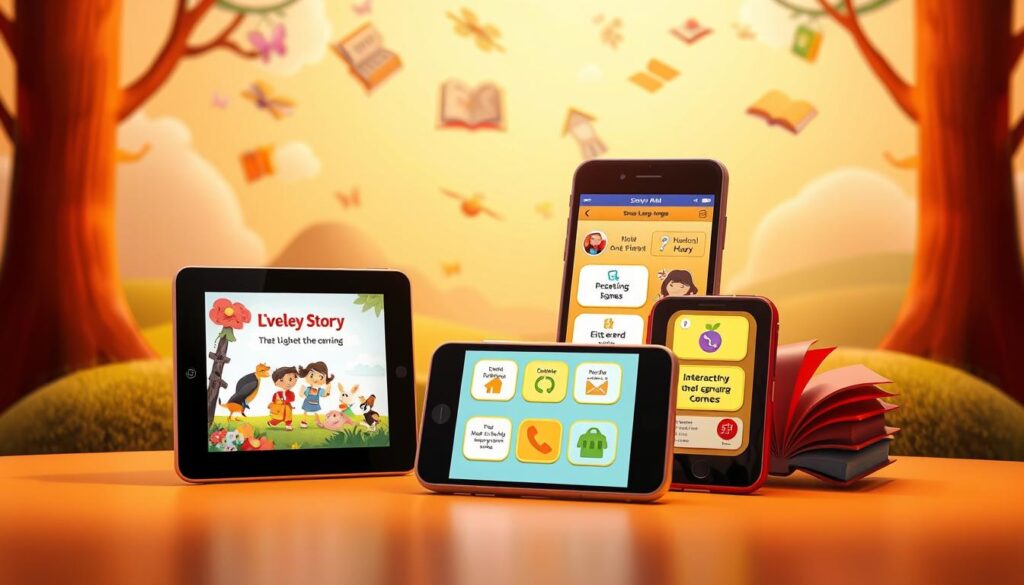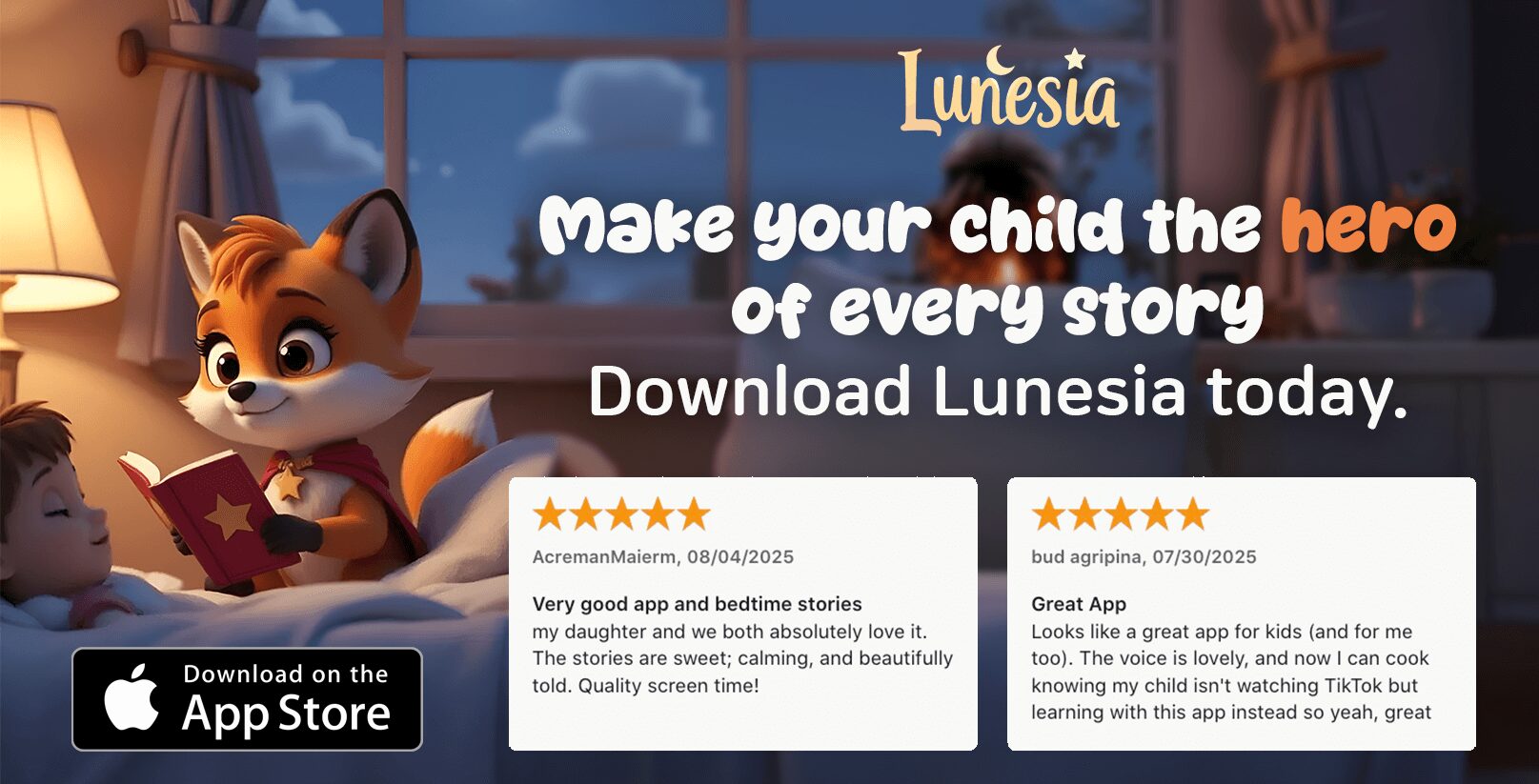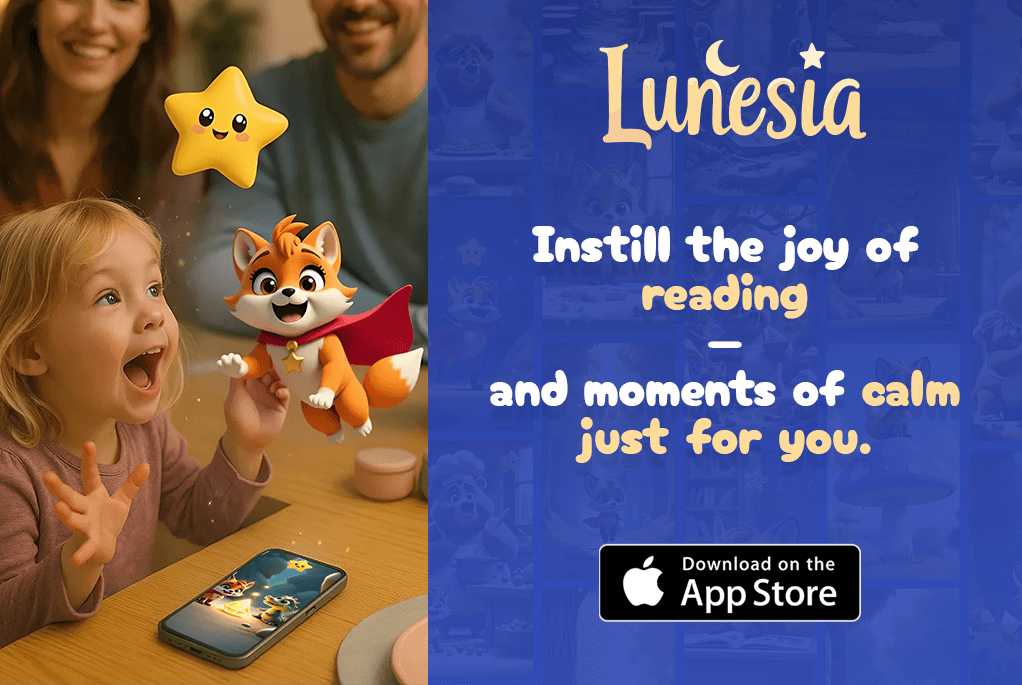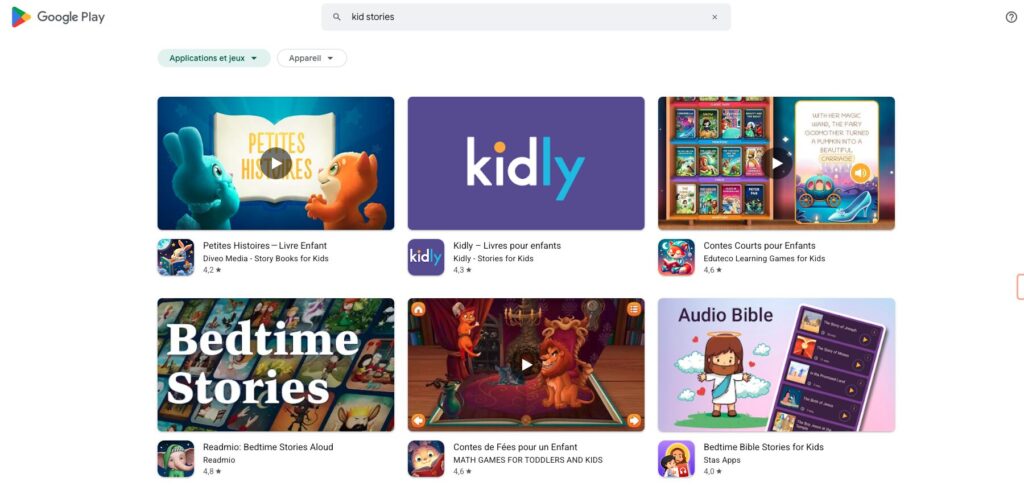When my niece was five, she struggled to connect with English. One day, I decided to read her Cinderella—a story she already loved in her native tongue. As I narrated, her eyes lit up. She repeated phrases, asked questions, and even tried to retell parts of the story. That’s when I realized the magic of storytelling in language learning.
Stories like fairy tales are more than just entertainment. They introduce kids to new words, phrases, and cultural contexts in a way that feels natural and fun. By engaging with characters and plots, children practice comprehension and pronunciation without even realizing it.
Interactive tools like Duolingo and Babbel have shown how gamified lessons can motivate learners. Similarly, tales create a nurturing environment where kids feel confident to explore and express themselves. Whether it’s chatting with a native speaker or retelling a favorite story, the benefits are endless.
Introduction: The Power of Tales in Language Learning
Every child has a unique way of connecting with a new language, and stories often bridge that gap effortlessly. Whether it’s a fairy tale or a fable, these narratives introduce kids to words and phrases in a way that feels natural and fun. They don’t just listen—they engage, repeat, and even retell parts of the story.
Research shows that storytelling is one of the most effective methods for stimulating language development in young children. By immersing themselves in a story, kids learn new vocabulary and understand grammar in context. It’s not just about memorizing words—it’s about experiencing them through characters and plots.
Here’s how stories make a new language accessible:
| Benefit | How It Helps |
|---|---|
| Vocabulary Building | Introduces new words in a memorable way. |
| Grammar Understanding | Teaches sentence structure through context. |
| Engagement | Keeps kids interested and motivated. |
For parents, integrating tales into daily routines can feel like a game-changer. It’s not just about teaching—it’s about creating moments of connection and joy. When kids retell their favorite stories, they’re practicing pronunciation and comprehension without even realizing it.
Making Language Learning Fun Through Engaging Stories
Stories have a unique way of turning dull moments into exciting adventures. When kids dive into a tale, they’re not just listening—they’re actively participating. This makes storytelling a powerful tool for making learning enjoyable and effective.
Take apps like Duolingo, for example. They use interactive games and timed challenges to keep users engaged. Similarly, stories transform traditional methods into dynamic activities. Kids learn new words and phrases without feeling like they’re studying.
Short, timed sessions are especially effective. Research shows that kids stay more focused when lessons are brief and engaging. A 10-minute story session can do wonders for vocabulary and comprehension. It’s all about making the most of their time.
Here’s how stories compare to traditional methods:
| Method | Engagement Level | Effectiveness |
|---|---|---|
| Storytelling | High | Memorable and fun |
| Traditional Lessons | Low | Often repetitive |
Parents can turn storytelling into a daily habit. Start with short tales and gradually increase the complexity. Encourage kids to retell stories or act them out. This not only boosts their confidence but also reinforces what they’ve learned.
Stories are more than just entertainment—they’re a gateway to a world of knowledge. By integrating them into daily routines, you’re setting the stage for a lifelong love of exploration and discovery.
The Educational Benefits of Storytelling for Kids
I’ve always believed that stories are more than just bedtime rituals—they’re powerful tools for growth. When children engage with tales, they’re not just entertained; they’re absorbing new words, understanding grammar, and developing critical thinking skills. It’s a natural way to introduce them to a new language while keeping them engaged.
Enhancing Vocabulary Acquisition
One of the most significant benefits of storytelling is its ability to expand a child’s vocabulary. When kids hear new words in context, they’re more likely to remember them. For example, hearing a native speaker use phrases like “once upon a time” or “happily ever after” helps them grasp the meaning naturally.
Research shows that children exposed to storytelling can experience up to a 50% increase in their vocabulary compared to those who aren’t. This is because stories repeat words in meaningful ways, making them easier to recall. Parents can reinforce this by asking kids to retell stories or point out new words they’ve learned.
Building Grammar Skills Through Context
Grammar doesn’t have to be boring. Stories teach sentence structure and rules through context, not memorization. For instance, when a character says, “I went to the market,” kids learn past tense without even realizing it. This method is far more effective than traditional grammar drills.
Studies also highlight that storytelling improves listening and comprehension skills by 30%. By following a narrative, kids learn to connect ideas and understand how sentences flow. This lays a strong foundation for their learning new language journey.
How Stories Foster Natural Language Acquisition
I once watched a child light up as they retold a story they’d just heard, effortlessly using new phrases. It was a moment that showed me how stories can make acquiring a new skill feel natural and fun. When kids engage with tales, they’re not just listening—they’re absorbing patterns, rhythms, and even cultural nuances.
Research supports this idea. A study in an international school found that students who participated in storytelling made rapid progress in their curriculum. They overcame shyness and worries about making mistakes, which is a huge step in becoming confident speakers. Stories create a safe space for kids to experiment and grow.
One key reason stories work so well is their ability to mimic real-life interactions. When a child hears a person narrate a tale, they’re exposed to natural speech patterns and intonations. This is especially helpful when the storyteller is a native speaker. Kids pick up on these cues without even realizing it.
Repetition and context are also powerful tools. In stories, words and phrases are often repeated in meaningful ways. For example, hearing “once upon a time” multiple times helps kids understand its use and meaning. This kind of exposure is far more effective than rote memorization.
“Stories are like bridges—they connect kids to new ideas and ways of speaking in a way that feels effortless.”
Parents can use this to their advantage. Start with simple tales and gradually introduce more complex ones. Encourage kids to retell stories or act them out. This not only reinforces what they’ve learned but also builds their confidence. Stories are more than just entertainment—they’re a powerful tool for growth.
Techniques for Effective Language Learning Through Tales
One afternoon, I noticed how my nephew’s eyes lit up as he repeated phrases from a story. It was a moment that showed me the power of combining listening and speaking in a natural way. Stories aren’t just for entertainment—they’re tools that help kids absorb new skills effortlessly.
Comprehensible Input and Output Strategies
When kids listen to a story, they’re exposed to new words and sentence structures. This is called comprehensible input. It’s the first step in helping them understand and retain information. But it doesn’t stop there. Encouraging them to repeat phrases or retell the story is equally important. This is known as output.
Here’s why this works:
- Listening builds familiarity with sounds and rhythms.
- Repeating phrases helps kids practice pronunciation.
- Retelling stories boosts confidence and comprehension.
For example, after watching a short video of a fairy tale, ask your child to describe their favorite part. This simple activity reinforces what they’ve learned in a fun way.
Creating a Balanced Study Plan
Balance is key when it comes to effective learning. Too much listening without speaking can leave kids feeling overwhelmed. On the other hand, focusing only on speaking might make them miss important context. A well-rounded plan includes both input and output activities.
Here’s a practical approach:
- Start with a short story or video to introduce new content.
- Encourage your child to repeat key phrases aloud.
- Ask open-ended questions to spark conversation.
Gradual progress is the goal. Over time, you’ll notice improvements in their ability to understand and express themselves. Stories make this process feel less like a chore and more like an adventure.
“Stories are bridges—they connect kids to new ideas and ways of speaking in a way that feels effortless.”
By integrating these techniques into your daily routine, you’re not just teaching—you’re creating moments of connection and growth. Whether it’s through a bedtime story or a quick video, every moment counts.
Product Roundup: Top Story-Based Language Learning Apps
As a parent, I’ve always been curious about how apps can make learning feel like play. Story-based apps have become a game-changer, blending entertainment with education. They keep kids engaged while introducing new words and phrases in a natural way. Let’s explore two popular options that stand out for their unique approaches.

Duolingo’s Gamified Lessons
Duolingo is a favorite among parents and kids alike. Its gamified lessons turn learning into a fun challenge. With over 30 languages available, it’s perfect for beginners. The app uses short, timed activities to keep kids focused and motivated.
One of its standout features is the conversation practice. Kids can listen to native speakers and repeat phrases, improving their pronunciation. The app also rewards progress with points and badges, making it feel like a game rather than a lesson.
For parents, Duolingo’s free version is a great starting point. The premium option removes ads and offers additional features, making it worth the investment for dedicated learners.
Babbel’s Interactive Courses
Babbel takes a more structured approach, focusing on real-life conversation skills. Its courses are designed by over 150 language experts, ensuring high-quality content. The app offers lessons in 13 languages, with each session lasting about 5 minutes.
What sets Babbel apart is its interactive feedback. Kids receive direct corrections from the app, helping them learn from mistakes. The lessons are practical, teaching vocabulary and phrases they can use in everyday situations.
Babbel’s subscription plans are flexible, with options for one, three, six, or 12 months. This makes it easy for parents to choose a plan that fits their child’s needs.
Both Duolingo and Babbel offer unique benefits. Duolingo’s gamified approach is ideal for keeping kids engaged, while Babbel’s structured lessons focus on practical skills. The best choice depends on your child’s learning style and goals.
Interactive Methods: Shadow Conversations and Immersive Practice
I remember the first time I tried shadowing with my son—it was a game-changer for his confidence. Shadowing conversations is a simple yet powerful technique that helps kids improve pronunciation and fluency. By repeating what they hear in real-time, children mimic native speakers’ intonation and rhythm, making the process feel natural and fun.
Here’s how it works: kids listen to an audio recording or a live speaker and repeat the words immediately after hearing them. This method builds muscle memory for common phrases and helps them speak more confidently. It’s especially effective in a class setting, where they can practice with peers and receive feedback.
Improving Pronunciation Through Shadowing
Shadowing is more than just repetition—it’s about immersion. When kids listen to native speakers, they pick up on subtle nuances like tone and pacing. Mimicking these elements helps them sound more natural and reduces hesitation. Start with slower audio recordings and gradually increase the speed as they improve.
Here’s a step-by-step guide to get started:
- Choose a short audio clip or video with clear speech.
- Play the clip and have your child repeat each phrase immediately.
- Focus on mimicking the speaker’s rhythm and intonation.
- Practice daily, even if it’s just for 5-10 minutes.
Integrating shadowing into your daily plan can make a big difference. Use it as a warm-up before class or as a fun activity during downtime. Over time, you’ll notice improvements in their pronunciation and confidence.
“Shadowing bridges the gap between listening and speaking, making it easier for kids to express themselves.”
By making shadowing a regular part of their routine, you’re helping them build skills that last a lifetime. Whether it’s through audio recordings or live practice, every moment counts.
Real-Life Applications: Integrating Stories into Daily Learning
Movies and TV shows have become a secret weapon in our household for boosting language skills. They mimic real-life situations, making it easier for kids to connect with new words and phrases. By incorporating authentic media into daily routines, you can create a fun and effective way to learn new things.
Exploring Authentic Media Experiences
Authentic media, like films and TV shows, strengthens skills by exposing kids to natural speech patterns. Watching familiar stories helps them grasp context and improve comprehension. For example, a child who loves Frozen can pick up phrases like “Let it go” and understand their meaning effortlessly.
Here’s how to make the most of media in just one dedicated hour:
- Choose a favorite movie or show with clear dialogue.
- Watch together and pause to discuss new words or phrases.
- Encourage your child to retell parts of the story in their own words.
Mixing classroom practice with real-life exposure creates a more robust learning new experience. It’s not just about memorizing—it’s about understanding and using what they’ve learned in everyday situations.
| Media Type | Benefits |
|---|---|
| Movies | Introduce cultural context and advanced vocabulary. |
| TV Shows | Provide repetitive phrases for better retention. |
| Interactive Content | Engage kids with quizzes and activities. |
Parents can use films and interactive content to supplement traditional study. For instance, after watching a movie, ask your child to describe their favorite scene. This simple activity reinforces their skills and makes learning feel like play.
“Authentic media bridges the gap between classroom learning and real-life application, making it easier for kids to connect with new ideas.”
By integrating stories into daily routines, you’re not just teaching—you’re creating moments of connection and growth. Whether it’s through a movie night or a quick TV show, every hour counts.
Innovative Tools: Exploring Language Reactor and Digital Resources
I recently discovered a tool that made screen time both fun and educational for my kids. It’s called Language Reactor, a Chrome extension that transforms Netflix shows into interactive learning sessions. With its set of features, it’s perfect for parents looking to make the most of their child’s viewing habits.
One of the standout features is the dual subtitles. Kids can watch their favorite shows with subtitles in both the original language and their chosen one. This helps them pick up new words and phrases effortlessly. The built-in dictionary is another game-changer. By hovering over a word, they get instant translations and examples, making it easier to understand context.
What I love most is how it highlights a lot of grammar and vocabulary in real time. For example, if a character says, “I’m going to the park,” the tool breaks it down, showing the sentence structure and key words. This makes it easier for kids to grasp complex concepts without feeling overwhelmed.
Here’s a quick look at what Language Reactor offers:
| Feature | Benefit |
|---|---|
| Dual Subtitles | Helps kids compare languages side by side. |
| Built-in Dictionary | Provides instant translations and examples. |
| Automatic Phrase Highlighting | Focuses on key grammar and vocabulary. |
Another great feature is the automatic pause. After every line, the video stops, giving kids time to read and process the subtitles. This ensures they’re not just passively watching but actively engaging with the content. It’s a small detail that makes a big difference.
“Language Reactor turns screen time into a learning adventure, making it easier for kids to pick up new skills.”
If you’re looking for a way to supplement traditional study routines, I highly recommend giving Language Reactor a try. It’s a set of tools that works seamlessly with Netflix and YouTube, offering a lot of value for both beginners and advanced learners. Plus, it’s free to start, so there’s no harm in experimenting.
By integrating this tool into your child’s routine, you’re not just teaching—you’re creating moments of connection and growth. Whether it’s through a favorite show or a new movie, every moment counts.
Essential Language Learning Strategies Through Narratives
Consistency has always been the cornerstone of building strong habits, especially when it comes to mastering new skills. Whether it’s learning a word phrase or practicing pronunciation, daily effort makes a world of difference. Stories, with their engaging plots and relatable characters, provide the perfect option for consistent practice.
One of the best ways to form habits is by integrating them into daily routines. For example, reading a short story every night before bed can become a natural part of the day. This approach ensures that learning feels less like a chore and more like a fun activity. Over time, these small steps lead to impressive progress.
Daily Practice and Habit Formation
Daily practice doesn’t have to be overwhelming. Start with just one short story or a 10-minute session. The key is to make it enjoyable and manageable. Here are some practical options to get started:
- Read a favorite story aloud and repeat key word phrases.
- Act out scenes from a tale to practice pronunciation and expression.
- Use apps or videos that combine storytelling with interactive activities.
These methods keep kids engaged while reinforcing their skills. Over time, they’ll start to look forward to these sessions, making habit formation feel effortless.
Real-life examples show how effective this approach can be. For instance, a child who reads the same story multiple times will naturally pick up new vocabulary and sentence structures. This repetition is a powerful tool for retention and comprehension.
| Activity | Benefit |
|---|---|
| Reading Aloud | Improves pronunciation and fluency. |
| Acting Out Scenes | Boosts confidence and expression. |
| Interactive Apps | Makes learning fun and engaging. |
Even one small daily session can lead to significant long-term gains. By incorporating stories into routines, you’re not just teaching—you’re creating moments of connection and growth. Consistency is the key to unlocking a child’s full potential.
Tips for Parents to Encourage Story-Based English Learning
One evening, as I read a story to my daughter, I noticed how effortlessly she picked up new phrases. It was a moment that reminded me of the power of storytelling in creating a supportive home environment. Here are some practical tips to help you motivate your child to explore English through stories.
Start with short, daily activities. Even just one minute of reading or retelling a story can spark a love for new words. Keep it fun and engaging by choosing tales your child already enjoys. Over time, these small steps can lead to big progress.
Create a nurturing and interactive study space. Set up a cozy corner with books, flashcards, or even a tablet for digital stories. Encourage your child to act out scenes or draw pictures inspired by the tales. This makes the experience more hands-on and memorable.
Consistency is key. Dedicate a few minutes each day to story-based learning. Whether it’s during breakfast or before bed, make it a routine. Over time, this consistency will help your child build confidence and skills naturally.
Here’s a quick guide to get started:
| Activity | Time | Benefit |
|---|---|---|
| Read a short story | 5 minutes | Introduces new vocabulary |
| Retell a favorite tale | 3 minutes | Boosts comprehension |
| Act out a scene | 2 minutes | Improves pronunciation |
Use trusted apps and tools to supplement your efforts. Apps like Duolingo or Babbel offer interactive stories that make learning feel like play. These resources provide instant feedback and keep kids engaged.
“Small, consistent efforts can lead to big results. Even a few minutes a day can make a difference.”
By integrating these tips into your routine, you’re not just teaching—you’re creating moments of connection and growth. Whether it’s through a bedtime story or a quick app session, every minute counts.
Overcoming Challenges: Embracing Mistakes and Self-Feedback
One morning, I watched a student hesitantly read aloud, stumbling over words but determined to improve. It was a moment that reminded me how mistakes are not failures—they’re stepping stones to success. Research shows that errors are a natural part of the process, and constructive self-feedback can turn them into powerful learning opportunities.

Turning Errors into Learning Opportunities
Every student faces challenges, whether it’s mispronouncing a word or struggling with grammar. These moments can feel frustrating, but they’re also chances to grow. By viewing mistakes as a goal for improvement, learners can build confidence and resilience.
Here’s how to transform errors into progress:
- Track Mistakes: Keep a journal to identify patterns and focus on areas needing improvement.
- Set Small Goals: Break down challenges into manageable steps, like mastering one new word a day.
- Celebrate Progress: Acknowledge even the smallest victories to stay motivated.
Real-life examples show the power of this approach. One student I worked with struggled with reading comprehension. By tracking errors and focusing on one paragraph at a time, they gradually improved their skills. Over time, their confidence soared, and they began to enjoy the process.
“Mistakes are proof that you’re trying. Each one is a lesson in disguise.”
Here’s a quick guide to help learners embrace errors:
| Strategy | Benefit |
|---|---|
| Self-Feedback | Encourages reflection and improvement. |
| Small Goals | Makes challenges feel manageable. |
| Positive Reinforcement | Boosts motivation and confidence. |
By integrating these strategies, parents and educators can create a supportive environment where mistakes are celebrated as part of the journey. Whether it’s through reading practice or speaking exercises, every error is a step closer to success.
Balancing Grammar and Vocabulary Through Engaging Tales
One evening, as I watched my son retell a story, I realized how repetition transformed his understanding of new words. Stories aren’t just entertaining—they’re a powerful method for balancing grammar and vocabulary in a way that feels natural and fun. By revisiting key phrases and sentences, kids absorb both the meaning and structure of a new language effortlessly.
Research shows that repetition in storytelling is a game-changer for retention. When children hear the same words and phrases multiple times, they’re more likely to remember them. This approach also helps them understand grammar in context, making it easier to apply in real-life situations.
Expanding Vocabulary Through Repetition
Repetition acts like a game for kids. When they hear familiar phrases in different parts of a story, they start to connect the dots. For example, hearing “once upon a time” multiple times helps them grasp its meaning and usage. This method is far more effective than rote memorization.
Here’s how repetition works:
- Introduces new words in a memorable way.
- Reinforces understanding through context.
- Builds confidence as kids recognize familiar phrases.
Parents can support this by reading the same story multiple times or encouraging kids to retell it in their own words. Over time, this repetition leads to significant vocabulary growth.
Contextual Grammar Learning Approaches
Grammar doesn’t have to be boring. Stories teach sentence structure and rules through context, not memorization. For instance, when a character says, “I went to the park,” kids learn past tense naturally. This method makes grammar lessons feel like part of the story, not a separate task.
Here’s why contextual grammar works:
- It’s intuitive and easy to understand.
- Kids learn grammar rules without feeling overwhelmed.
- It’s reinforced through repeated exposure.
By integrating stories into daily routines, parents can create a positive experience that makes grammar learning enjoyable. Whether it’s through bedtime stories or interactive apps, every moment counts.
“Stories are bridges—they connect kids to new ideas and ways of speaking in a way that feels effortless.”
Balancing grammar and vocabulary through storytelling is a game-changing approach. It’s not just about teaching—it’s about creating moments of connection and growth. By making repetition and context a part of the experience, you’re setting the stage for lifelong learning.
Enhancing Learning with Multi-Sensory Storytelling Techniques
One day, I introduced my child to a story with sound effects, and their excitement was contagious. Multi-sensory storytelling combines audio, visuals, and interactive elements to create a powerful tool for deeper understanding. By engaging multiple senses, kids absorb information more effectively and retain it longer.
Here’s how multi-sensory techniques can enhance every course of study:
- Listening: Audio elements like sound effects or music make stories more immersive.
- Viewing: Visual aids, such as illustrations or videos, help kids connect words with images.
- Interactive Participation: Activities like acting out scenes or using tactile materials make learning hands-on.
Adding these techniques to your child’s routine can transform storytelling into a dynamic addition to their learning process. For example, pairing a story with a related craft activity reinforces vocabulary and comprehension in a fun way.
Here’s a step-by-step guide to integrating multi-sensory storytelling:
| Step | Activity |
|---|---|
| 1 | Choose a story with audio or visual elements. |
| 2 | Encourage your child to act out scenes or use props. |
| 3 | Discuss the story and ask open-ended questions. |
Research shows that multi-sensory learning engages more areas of the brain, leading to better retention and comprehension. It’s especially effective for kids who struggle with traditional methods. By making stories interactive, you’re not just teaching—you’re creating moments of connection and joy.
“Multi-sensory storytelling bridges the gap between listening and understanding, making learning feel like an adventure.”
Whether it’s through audio-enhanced tales or hands-on activities, every addition to your child’s routine can make a big difference. Start small, and watch their curiosity and confidence grow.
Conclusion
Every journey begins with a single step, and story-based learning offers a clear path for young minds. Throughout this article, we’ve explored how tales, podcasts, and interactive tools can transform the way children engage with new skills. By integrating diverse content into daily routines, parents can create a nurturing environment where kids thrive.
Consistency is key. Setting small, achievable goals—like reading a short story or listening to a podcast—can lead to significant progress over time. These methods are not just effective; they’re fun and engaging, making learning feel like an adventure rather than a chore.
For every student, the journey is unique. Celebrate the small wins, whether it’s mastering a new word or retelling a favorite tale. These moments build confidence and foster a love for exploration.
Let’s make learning a joyful, shared experience. With the right tools and a bit of creativity, every child can unlock their full potential. Start today, and watch them grow!
FAQ
How can stories help kids learn English effectively?
Stories make the process engaging by introducing new words and phrases in a meaningful context. They also help children understand grammar naturally through repetition and context.
What are some benefits of using storytelling for language development?
Storytelling enhances vocabulary, improves grammar skills, and fosters natural acquisition by immersing kids in relatable and enjoyable content.
Which apps are best for story-based language learning?
Duolingo offers gamified lessons, while Babbel provides interactive courses that focus on real-life conversations and storytelling techniques.
How can parents encourage story-based English learning at home?
Parents can read aloud, use interactive apps, and create a daily routine that includes engaging tales to make the process fun and consistent.
What techniques improve pronunciation through storytelling?
Shadow conversations, where kids repeat phrases after a native speaker, and immersive practice with audio or video content are highly effective.
How can mistakes be turned into learning opportunities?
Encourage kids to view errors as part of the process. Provide gentle corrections and use examples from stories to reinforce correct usage.
What role does multi-sensory storytelling play in language learning?
Multi-sensory techniques, like combining visuals, audio, and hands-on activities, help reinforce new words and concepts, making them easier to remember.
How can daily practice be integrated into a child’s routine?
Set aside dedicated time each day for reading, listening to podcasts, or watching videos in English to build consistent habits.
What are some ways to balance grammar and vocabulary through stories?
Focus on repetition of key phrases and use contextual examples from tales to teach grammar rules naturally.
How can authentic media enhance language learning?
Authentic media, like children’s shows or podcasts, exposes kids to real-life conversations and cultural nuances, making the experience more immersive.




